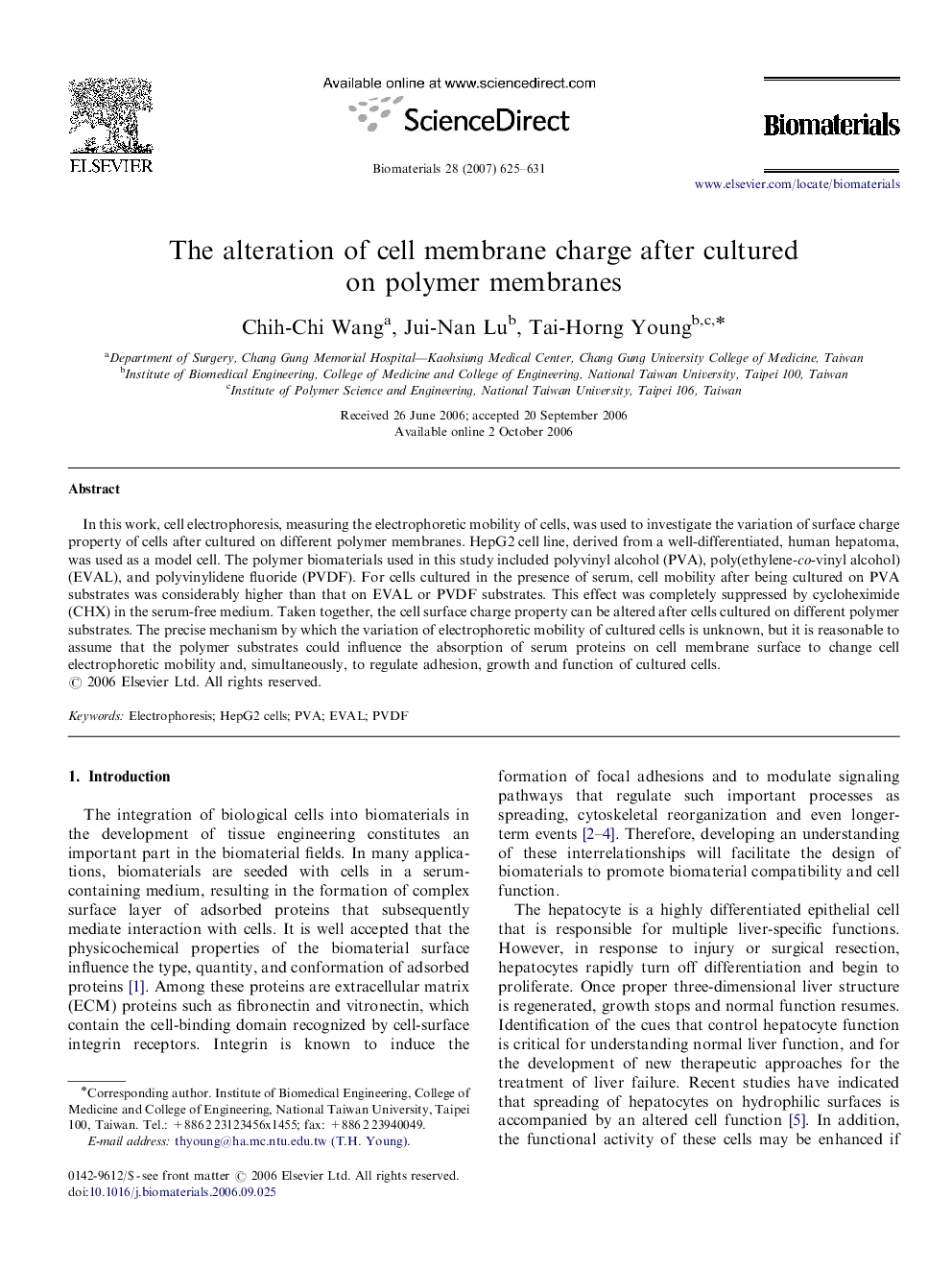| Article ID | Journal | Published Year | Pages | File Type |
|---|---|---|---|---|
| 11144 | Biomaterials | 2007 | 7 Pages |
In this work, cell electrophoresis, measuring the electrophoretic mobility of cells, was used to investigate the variation of surface charge property of cells after cultured on different polymer membranes. HepG2 cell line, derived from a well-differentiated, human hepatoma, was used as a model cell. The polymer biomaterials used in this study included polyvinyl alcohol (PVA), poly(ethylene-co-vinyl alcohol) (EVAL), and polyvinylidene fluoride (PVDF). For cells cultured in the presence of serum, cell mobility after being cultured on PVA substrates was considerably higher than that on EVAL or PVDF substrates. This effect was completely suppressed by cycloheximide (CHX) in the serum-free medium. Taken together, the cell surface charge property can be altered after cells cultured on different polymer substrates. The precise mechanism by which the variation of electrophoretic mobility of cultured cells is unknown, but it is reasonable to assume that the polymer substrates could influence the absorption of serum proteins on cell membrane surface to change cell electrophoretic mobility and, simultaneously, to regulate adhesion, growth and function of cultured cells.
